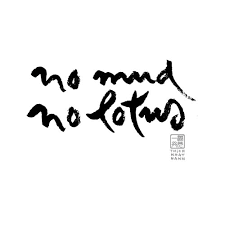
What is Mindfulness?
What springs to mind for me when I want to explain mindfulness, is the story of The Lion, the Witch and the Wardrobe by C.S. Lewis. I think of entering the wardrobe as being a metaphor for searching for an exterior disguise to hide who we really are. Like putting on a hat or a costume to present a different persona to the world and even to ourselves. We are searching for a way to bury or avoid our fears and anxieties by adding instead of taking away. We may feel temporary relief and an uplifting of spirits at the time, but it wears off. When we remove the ‘costume’ we are left with the same feelings of lacking and dis-ease as before.
Finding the door within the back of the wardrobe by pushing through the old coats and hats, to me is a metaphor for looking deep within ourselves and beyond. Like a door opening in the mind onto an expanse of vivid reality, simplicity and beauty. It would be as if we were seeing the world for the first time with complete clarity. We all possess this place of refuge within ourselves. What we are seeking is right here if we stop and listen to the silence. Of course this presents challenges, but with practice we will develop compassionate, awareness. With a quieter mind, we are far more likely to make wise decisions.
Mindfulness enables us to accept that there will be both good and bad experiences in life and to embrace both. It also helps us to appreciate our common humanity. All of us must suffer sometimes. It is through suffering that we grow and gain strength and resilience. Most of us go through our lives trying to avoid pain. In fact unnecessary suffering is caused by our battles against it. Mindfulness is about accepting life as it is. It is about tuning into ourselves and acknowledging what we are really feeling. It is about realising that what we think, is not necessarily true. But regardless of this, the mind will trigger the brain to react to make-believe scenarios, usually ones of possible danger, in order to prepare the body to be on high alert. This creates chemical changes in the body which are detrimental to our health if triggered repeatedly through wrong perceptions, with little time to recover. By regularly tuning in to our bodies we can learn to read the signs of how our thoughts are affecting us. By changing the way we think we can alter our experience of life. Mindfulness allows us to achieve that. Mindfulness creates space to put us in touch with our innate awareness. Mindfulness is remembering to just ‘be’ and in so doing, be awake to life.
“The awareness that arises through paying attention, on purpose, in the present moment and non-judgementally” (Jon Kabat Zinn).
“Knowing what is happening, while it is happening, without preference.” (Robert Nairn).
The Neuroscience of Mindfulness Meditation
We are hard wired to seek out danger in order to survive. The brain has a negativity bias which served us well when we were hunter-gatherers in danger of being eaten by predators, but it doesn’t serve us so well in the 21st century. Rarely are we in a genuine life or death situation on a daily basis. But when we worry about the future or ruminate over something that has upset us in the past, the brain cannot differentiate between a genuine scenario or an imagined one. The body still reacts in the same way. It is in a state of emergency. We are in a fight, flight or freeze mode of being. In addition, we do not have much time to recover as our distant ancestors did. Our pace of life is far too frantic.
Stress and suffering spreads though the body via the Sympathetic Nervous System (SNS). The SNS sends signals to the major organs and muscle groups preparing them to fight or flee. Adrenaline and cortisol , known as ‘stress hormones’ are released suppressing the immune system to reduce inflammation from wounds. There are numerous major systems of the body and the main point of entry is the Autonomic Nervous System (ANS), which controls all other systems.
When we relax, particularly whilst meditating, we quiet the fight or flight SNS. The messages being sent to the alarm centres in the brain are being told that there is no need for action. The Parasympathetic Nervous System (PNS) is then engaged and strengthened. If practiced regularly, meditation, through stimulating the PNS and other parts of the Nervous System, creates changes in the brain leading to improvements in mental and physical health. Grey matter increases in the hippocampus, resulting in a greater capacity for attention, compassion and empathy. Cortisol is reduced, improving the immune system.
So we can in fact create neurological changes to the brain through mindfulness meditation practices and improve our lives. Thousands of medical research trials using MRI scans have now taken place over the last fourty years, proving that changes to the neuroplasticity of the brain take place through regular practice.
We can at any stage in life, change the way we think and therefore change the workings of our brain. Recovery from illness can be accelerated and chronic pain can be well managed or even reduced. Practicing formal and informal mindfulness on a daily basis can reduce anxiety and ease or lift depression. Our resilience will grow. Through regular practice, we will learn to choose to respond to life’s challenges from a place of spacious awareness, instead of reacting through fear and defensiveness. Mindfulness grants us the gift of freedom.
Compassion
The practice of self-compassion is learning to be a good friend to oneself. A lot of us have a very stern inner voice which speaks to us in a way that we would never speak to a loved one or in fact anyone we know. This pattern of thinking is unkind and self-destructive. By turning towards our pain and asking ourselves where it comes from, we can then act with kindness and understanding and begin to heal. We cannot ignore our pain and feel compassion towards it. With practice, we will accept our own humanity with the acknowledgement that none of us is perfect, we are all vulnerable and we all make mistakes. Only then will we have the capacity to feel true compassion towards others.
Meditation
Meditation is a bit of a taboo subject. People shy away from it thinking that it is something they have to learn which is going to be difficult and beyond them. But in reality, it is simply allowing oneself to experience quiet periods of peace and contemplation. It could begin with 5 minutes a day, gradually increasing to 20, 30 or longer. It becomes something we desire and therefore look forward to.
We may also be put off by the archetypal image of someone sitting on the floor in lotus position in order to meditate. It is absolutely not necessary to sit in this position or in fact to sit on the floor! As long as your back is straight and your spine aligned, you can quite happily meditate kneeling on a cushion, sitting on a chair, standing, or even walking. Some meditations can be done lying on the floor, but of course one has to beware of the possibility of falling asleep.
Most of us are terrified of silence. We feel the need to fill the silence with noise in order to avoid being left with our own thoughts. But in fact it is essential to give ourselves permission to stop and create space occasionally, in order to slow down the activity of the mind and allow ourselves to feel. What we feel emotionally stems from what we think.
Meditation is also a way of consciously ceasing physical activity. Again, we fill our lives with busyness in order to block out feelings. Tuning in to our bodies can highlight hidden tensions that, when examined, reveal our need to nurture ourselves instead of pushing through limits. The body is trying to let us know that we must take notice or illness will ensue.
I will guide you in such a way that will help you to become comfortable with the idea of meditation, incorporate it into your everyday life and hopefully look forward to those precious moments of peace.
The Origin of Mindfulness
Mindfulness is not a new thing! It began around 2,600 years ago with the birth of Buddhism. It is a secular practice and although its routes lay in this ancient eastern philosophy, you do not have to be Buddhist to practice it. Made popular by the scientist Jon Kabat Zinn in the late 1970’s after listening to the late Buddhist teacher and activist, Thich Nhat Hahn, it has taken over 40 years to gain the popularity that is has today. Thousands of research studies have now taken place to prove what Kabat Zinn believed in, which is that by practicing mindfulness, people can relieve unnecessary suffering. Not only that, but it can accelerate recovery from illness, help deal with pain management and improve the quality of our lives. He created the Mindfulness Based Stress Reduction Course in order to help people suffering from the negative psychological effects of chronic disease. Integrating the wisdom of Buddhist teachings with science, he created the Stress Reduction Clinic and the Center for Mindfulness in Medicine, Health Care and Society at the University of Massachusetts Medical School.


